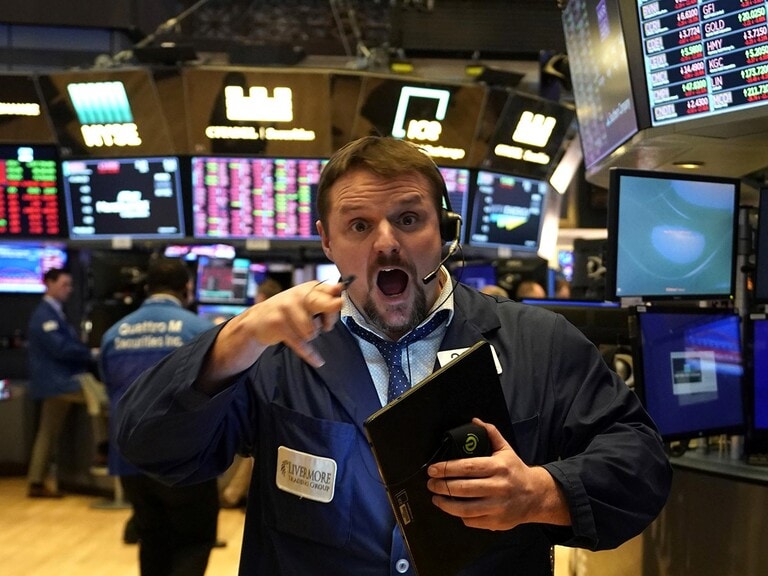It’s been a year of two halves for the pound, finishing last year very much on the up after sinking to 35-year lows of 1.1412 against the US dollar, it finished 2020 at the 1.3600 level.
This positive theme continued into the New Year despite concerns about negative rates, as well the enforced lockdown of the UK economy from the January 6th, culminating with a peak of 1.4249, and finishing the first half of the year on a buoyant note.
To help explain why the pound performed so well, one need look no further to what can only be described as a vaccine premium at the start of the year, which showed the UK leading the way in vaccinating its population.
The second half of this year hasn’t been as positive, declining gradually since the June peaks of 1.4249, to the lows of the year so far at 1.3160, as some elements of the vaccine premium unwinds.
The decline in the pound in large part has predominantly been down to the strength of the US dollar, more than sterling weakness, as shown in the chart below, but nonetheless there have been days when sentiment around the pound has been profoundly negative.
GBP performance YTD 2021

Source: ALFATRADING-MARKETS
The pound’s performance against the likes of the euro, Japanese yen, and Swiss franc has been much better, indicating that sometimes just looking at the performance of the pound through the lens of the US dollar can offer a distorted picture, although even here we are seeing weakness since mid October.
One of the more welcome developments this year is the lack of predictions of a call to parity against the euro and the US dollar, which have been a consistent staple in recent years, although the tired comparisons to it being an emerging market currency do sometimes get let out for air on occasion.
Another factor that might have weighed heavily on the pound at the start of the year was the prosect that the Bank of England might be looking to go down the route of negative interest rates.
Several policymakers seemed enthusiastic on this, with the central bank pushing the banking sector to prepare for such an outcome, even though we have seen from the experiences of Europe, Japan, and Switzerland, they’ve been about as effective as a chocolate teapot.
The reasoning behind interest rate cuts into negative territory, is that they would help stimulate consumer spending, as well as investment, and that there was clear evidence that negative rates had worked in the EU and Japan, where rates are already at these record low levels.
This reasoning is laughable, given that banks in both regions have struggled to give these loans away, and also struggled to generate any sort of margin on their lending operations.
Furthermore, consumers are highly unlikely to spend on anything other than essentials if they are worried about, 1) catching an infectious virus, or 2) losing their job due to the wholesale shutdown of the economy due to lockdowns, or as is the case now, sharp increases in prices for staples like food and energy.
Fortunately, as the economy has improved this year, the bias on monetary policy has shifted away from negative rates, to when interest rates might move higher.
This bias is no better illustrated in how UK gilt yields have moved since the start of the year.
At the end of last year, the UK 2-year gilt had a negative yield of -0.16%, and since that time has moved slowly higher, to a high in October of 0.733%, and now sits below 0.6%
Given that the base rate only last week moved from 0.1% to 0.25%, this is quite a significant shift in sentiment and expectations, and begs the question was to what we can expect over the next 12 months.
What’s next for the pound?
As we look ahead to 2022, the big question now is whether the Bank of England delivers on a modest increase in the base rate, and if they do how many more might be coming over the course of the rest of the year.
Currently markets are pricing the prospect of a base rate of 0.75% over the next 18 months. The big question is whether that is remotely credible. This seems mightily optimistic which means that while we could well see rate rises in the next few weeks and months, markets may need to temper their expectations, and as such a break below 1.3000 could be a real possibility.
That by itself won’t necessarily mean we see a higher pound if other central banks move in a similar direction, especially since an increasing number of voices are expressing concern that the Federal Reserve is woefully behind the curve in guiding expectations around its own monetary policy direction.
The US central bank is currently tapering its bond buying program by $15bn a month, $10bn in US treasuries and $5bn in mortgage-backed securities, a process that will get speeded up to $30bn a month next month.
A faster taper would then mean that rate rise expectations get brought forward, with financial markets increasingly pricing in the prospect of three possible US rate rises by the end of next year, which in turn would place greater downward pressure on the pound as well as the euro.
As far as the Bank of England is concerned their forward guidance has been nothing short of woeful this year, indicating that they might raise rates, and then pulling the rug on the day. The central bank is currently running a credibility deficit with the markets in terms of how it leads market expectations and will need to work hard next year if it wants to build that back up.
The hope was that the central banks communication strategy might change under the stewardship of new Governor Andrew Bailey, after the unreliable boyfriend era of Mark Carney. Sadly, it appears to have gone backwards with the current incumbent, with the bank seemingly ambivalent about improving it. Hopefully that will change in 2022. It really needs to be given the policy shambles seen in November, and the subsequent rate move last week.
As far as the euro is concerned the outlook for the single currency remains tilted towards the downside, given it looks increasingly inconceivable that the European Central Bank will ever raise rates from their current levels of -0.5%.
This is what has weighed on the euro this year and could well continue to do so into 2022, despite concerns over rising inflation, with the risk we move below 1.1000 in the coming weeks.
On a comparable basis core CPI is much lower in the EU than it is in the US or UK, and while there are regional disparities which means that inflation is likely to be much higher in places like Germany, it is much more subdued in the southern parts of Europe due to structural considerations.
Despite the weakness in the back part of 2021 against the US dollar there is decent support for the pound in the low 1.3000’s especially if you look at a much longer-term monthly chart. This is the same chart that we used last year to project the prospect of a move back to the 1.4000 level.
The 200-month moving average remains a key draw for the price action, while the 50- and 100-month moving averages are acting as a little bit of a pincer movement, which could see a fall back towards 1.3200.
We already can see that the 1.4200 area is a huge resistance area, as can be seen from this year’s failure to move above the previous peaks from 2018.
GBPUSD monthly chart - current

Source: Bloomberg
A lot of this more technical stuff tends to prompt a certain degree of scepticism from some quarters, and while there are no absolutes when it comes to talking about price moves, we can still talk about probabilities, based on precedent.
After another 12 months of price action, we’re currently trading around the 50-month moving average, which should act as some element of support.
The failure to move above the 2018 peaks at 1.4200 does raise the risk of a move back towards the previous lows, but that could only happen if we unexpectedly close below the 50-month moving average at 1.3200.
Working on the basis that prices eventually revert to their longer-term mean, the bias remains for a move back towards the 1.4000 level, especially given we are still some way off from the 200-month moving average, which has now fallen back to the mid 1.5000’s.
While the long-term monthly charts suggest that the pound may be settling into a new range between the recent lows at 1.2000, and the peaks this year at 1.4250, the daily charts are a little less clear and worrying looking a little on the soft side, currently in a downtrend from the June highs, running the risk of a move towards 1.2500.
GBPUSD daily chart

Source: ALFATRADING-MARKETS
When looked at on this basis it would need a move below the 1.3100 area to undermine the current upward momentum that has been in place since the end of Q2 2020. On the upside we need to see a break of the upper line as well as the 200-day MA to alleviate the current downside pressure on the cable price.
Ultimately the direction of the pound will to some extent, depend on a variety of factors, the speed of any recovery next year, and future central bank policy, as well as any fiscal measures taken by governments.
This is likely to be a concern heading into the next tax year if the UK government go ahead and implement the various tax increases, they have planned, at a time when the economy may still be struggling.






